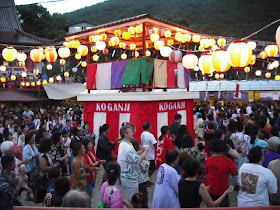 Pineapple
Pineapple Pineapple is well-known the world over, but if you think about it, it’s a strange-looking fruit. One wonders who discovered that it could be eaten? Who was the first to learn that there was a sweet delicious fruit inside that hard, spiky shell? Pineapple contains sugar, malic and citric fruit acids. It is high in vitamin B1, B2, B6, C and manganese. Its enzyme bromelain aids digestion.
Noni
The noni tree has beautiful broad green leaves, and the fruit looks somewhat potato-like, although green, ripening to a translucent yellow/white with warty-looking brown spots. Noni is well-known as a Hawaiian medicinal plant. However, we are warned by gardeners not to plant it near a bedroom window. As it ripens, the fruit smells truly horrible—like unwashed feet that have been in rubber slippers too long. And, it doesn't taste good either! It is known as a famine fruit, which means, probably, edible only if there’s nothing else to eat.
As a medicine, noni juice is used by traditional healers for heart problems, high blood pressure, and diabetes. It’s also used to treat skin cancer.

Star Fruit
Funny-shaped but pretty, star fruit is a really juicy semi-sweet five-edged fruit. When sliced, it looks like a star. It should be eaten when yellow or light green. The edges will be brown, but don’t worry about that. It’s only got about 30 calories and it’s a good source of Vitamin C. It’s also rich in antioxidants, low in sugar and acid.

Breadfruit
Breadfruit is a staple food of Pacific islanders, often substituted for starchy foods like potatoes, pasta, or rice. It can be roasted, baked, fried or boiled; the taste is somewhat potato-like, or similar to fresh-baked bread. The fruit is rarely sold except at roadside fruit stands in season, but a breadfruit tree in your yard is an invitation for locals to come by. A neighbor once took several and a month later brought back some dried breadfruit ‘chips’ to try.
Nutritionally speaking, breadfruit is high in energy from carbohydrates and low in fat. It is a good source of fiber, calcium, copper, iron, magnesium, potassium, thiamine, and niacin.
When cut, a milky juice comes out that’s extremely sticky. In the old days this latex was useful for boat caulking—not sure if that makes it more or less appetizing…
The breadfruit tree leaves, bark, and latex have been used medicinally by native Hawaiians. It’s a whole pharmacy in one tree. The latex can be massaged into the skin to treat broken bones or sprains, and compresses applied to the spine relieve sciatica. Crushed leaves benefit skin problems and fungal diseases like thrush. Diluted juice is taken internally to treat diarrhea, tummy aches, and dysentery. The sap from the crushed leaf stems heals ear infections or sore eyes. Chase away a headache with a remedy made from its bark. It is thought that tea made from the leaves will control diabetes.
Rambutan
"Rambut" is Malay for 'hairy,' so it’s obvious why the fruit is called rambutan. The fruit has a single central inedible seed with white flesh wrapped around it, just like lychee. The fresh fruits are easily bruised and have a limited shelf life. Rambutan fruit is rich in fat, calcium, iron, protein, nitrogen, zinc, magnesium, manganese, potassium, phosphorus, vitamins C and A, thiamin, riboflavin, and fiber. Some sources say that eating rambutan can decrease the chance of cancer, and it’s very effective in lowering blood pressure.









